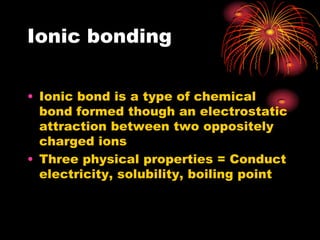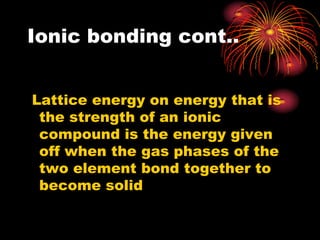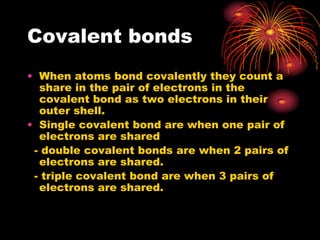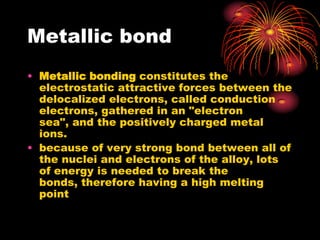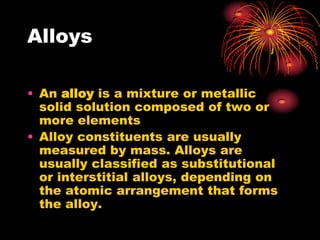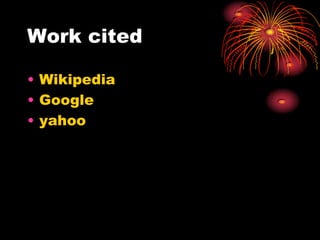Chem 4
- 1. Option 1 Marcos marce and jason schilling
- 2. Intro âĒ A chemical bond is a is an attraction between atoms that allow the formation of chemical that contains 2 or more atoms âĒ Attraction between atoms and for molecules cell lead to chemical bonding âĒ Ionic bond is a type of chemical bond formed though an
- 3. Ionic bonding âĒ Ionic bond is a type of chemical bond formed though an electrostatic attraction between two oppositely charged ions âĒ Three physical properties = Conduct electricity, solubility, boiling point
- 4. Ionic bonding cont.. Lattice energy on energy that is the strength of an ionic compound is the energy given off when the gas phases of the two element bond together to become solid
- 5. Covalent bonds âĒ When atoms bond covalently they count a share in the pair of electrons in the covalent bond as two electrons in their outer shell. âĒ Single covalent bond are when one pair of electrons are shared - double covalent bonds are when 2 pairs of electrons are shared. - triple covalent bond are when 3 pairs of electrons are shared.
- 6. Metallic bond âĒ Metallic bonding constitutes the electrostatic attractive forces between the delocalized electrons, called conduction electrons, gathered in an "electron sea", and the positively charged metal ions. âĒ because of very strong bond between all of the nuclei and electrons of the alloy, lots of energy is needed to break the bonds, therefore having a high melting point
- 7. Alloys âĒ An alloy is a mixture or metallic solid solution composed of two or more elements âĒ Alloy constituents are usually measured by mass. Alloys are usually classified as substitutional or interstitial alloys, depending on the atomic arrangement that forms the alloy.
- 8. Work cited âĒ Wikipedia âĒ Google âĒ yahoo


